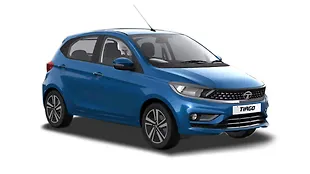Three things that changed Indian car buying
The last twelve months have been a roller coaster for the Indian economy. The Indian car market is very sensitive to even small changes in the economy, especially because even today, buying a car is a big ticket decision. Here are the top three events that had a bearing on the Indian car market.

Demonetisation
When the prime minister of India, Narendra Modi, announced the ban on Rs 500 and Rs 1000 bank notes, the economy went into a shock. The Indian economy, known for its cash-base, came to a grinding halt with more than half of the money’s worth suddenly out of circulation. Naturally, big-ticket purchases like cars dropped like a stone and all the projections for the year went for a toss. The year 2016-17 was supposed to mark the revival of the automobile industry but demonetisation turned to be a big speed-bump.
But, within two months, car sales numbers sprung back to the estimated levels and 2016-17 grossed the highest ever car sales in Indian history as it crossed 30 lakh units in that financial year. Analysis of post-demonetisation sales numbers gave us insights into car buying patterns. Compact car sales were largely unaffected which means the cash component in this segment is minimal. The B+, C and D segment cars were the most affected while the luxury car sales were undisturbed.
GST
With the NDA government on a charge, the next reform, GST, was implemented beginning from 1 July. But this was not intended to be introduced with the same shock and awe strategy that the government had deployed for demonetisation. With ample notice at hand, car makers had the opportunity to plan for a change in the tax regime.
Car makers helped their dealers clear their stocks by offering discounts and absorbing some of the margins. Since the inventory would attract GST on sale even if it was stocked before July 1, car manufacturers halted factory dispatches which reflected in the SIAM sales figures for June. Accordingly, the July numbers showed a sharp rise as the dispatches and deliveries were compensated.
While prices of small cars remained largely unchanged, the big SUVs and luxury cars turned out to be the biggest benefactors of the GST regime. Price cuts ranged from a few thousands to a few lakhs depending upon the prices. The huge price cuts have attracted government attention and the GST rates for SUVs and luxury cars might be hiked to bring the prices back to pre-GST levels.
Floating petrol prices
Close on the heels of GST, the government announced daily price revision of petrol. In simple terms, the petrol price will be revised daily depending upon global prices and other factors. This helps oil PSUs react in a dynamic way to international price, thus helping them minimise their losses.
With both petrol and diesel being de-regulated and being revised every 15 days prior to the further deregulation of petrol, car buyers have slowly warmed up to the idea, minimising any effects on car buying. But, with the petrol-diesel disparity now marginal, petrol car sales have gone up, eclipsing diesel car sales after almost a decade. The change in buying pattern is evident as even luxury carmakers have started offering petrol versions in their diesel-only models as well.

![Maruti Suzuki Baleno [2015-2019] Image Maruti Suzuki Baleno [2015-2019] Image](https://imgd.aeplcdn.com/272x153/cw/ec/21723/Maruti-Suzuki-Baleno-Right-Front-Three-Quarter-147250.jpg?wm=0&q=80)
![Maruti Suzuki Baleno [2015-2019] Right Front Three Quarter Maruti Suzuki Baleno [2015-2019] Right Front Three Quarter](https://imgd.aeplcdn.com/199x112/cw/ec/21723/Maruti-Suzuki-Baleno-Right-Front-Three-Quarter-147250.jpg?wm=0&q=80)
![Maruti Suzuki Baleno [2015-2019] Exterior Maruti Suzuki Baleno [2015-2019] Exterior](https://imgd.aeplcdn.com/199x112/cw/ec/19751/Maruti-Suzuki-Baleno-Exterior-118756.jpg?wm=0&q=80)
![Maruti Suzuki Baleno [2015-2019] Right Front Three Quarter Maruti Suzuki Baleno [2015-2019] Right Front Three Quarter](https://imgd.aeplcdn.com/199x112/ec/08/76/19751/img/m/Maruti-Suzuki-New-Baleno-Right-Front-Three-Quarter-55663_l.jpg?v=201711021421&q=80)
![Maruti Suzuki Baleno [2015-2019] Dashboard Maruti Suzuki Baleno [2015-2019] Dashboard](https://imgd.aeplcdn.com/199x112/cw/ec/19751/Maruti-Suzuki-Baleno-Dashboard-105544.jpg?v=201711021421&q=80)
![Maruti Suzuki Baleno [2015-2019] Steering Wheel Maruti Suzuki Baleno [2015-2019] Steering Wheel](https://imgd.aeplcdn.com/468x263/cw/ec/19751/Maruti-Suzuki-Baleno-Steering-Wheel-91881.jpg?v=201711021421&q=80)

























